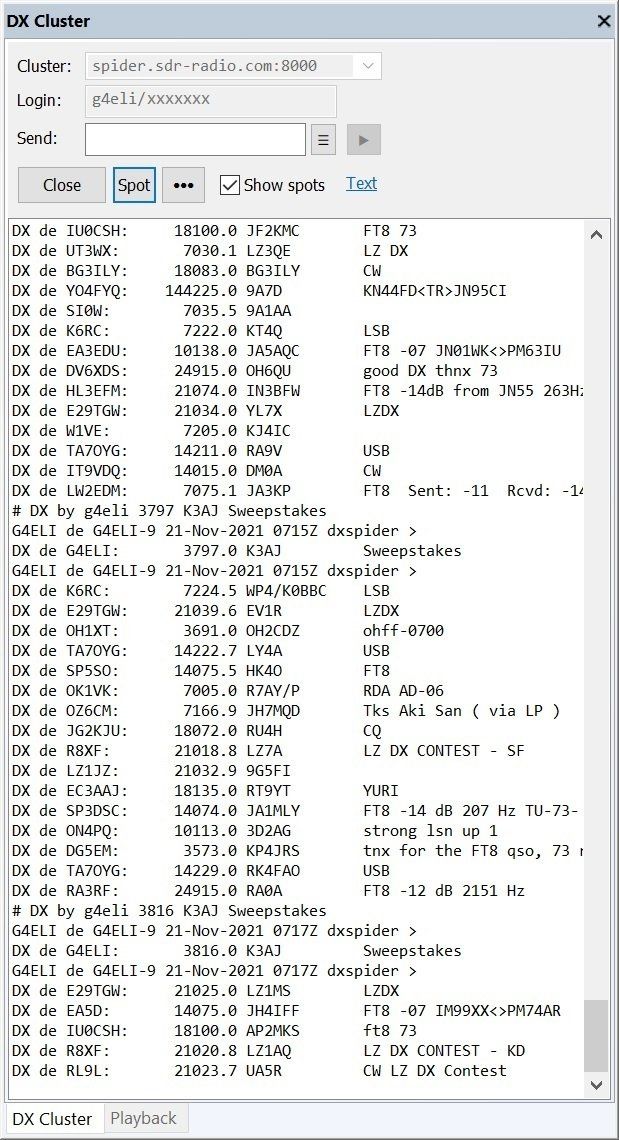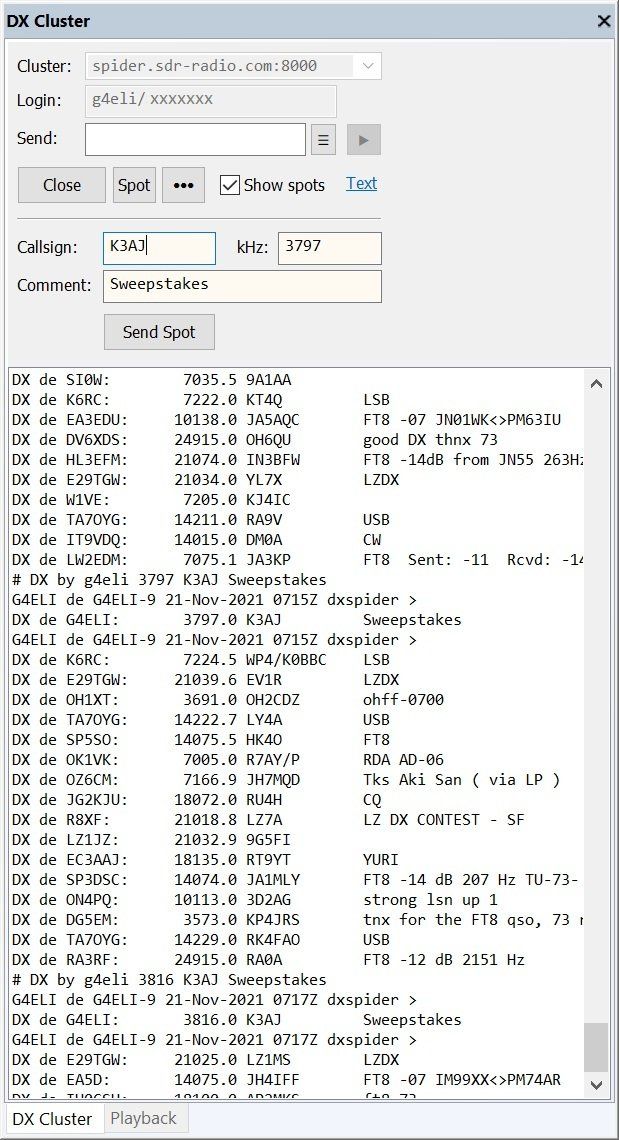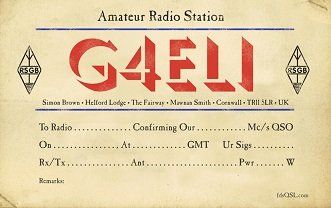DX Cluster
Add DX Cluster spots to the spectrum
Spectrum Markers
Version 3.0.11 introduced spectrum markers, an exciting way to annotate the display. Version 3.0.12 takes the markers concept a step further by adding support for DX Cluster spots as shown below.
As spots arrive they are added to the display and remain for a period which you select in the options (below).
Note: Markers must be enabled if DX Cluster spots are to be shown, more information is here.
Interface
Select DX Cluster from the ribbon bar, View, Spectrum pane.
The cluster dropdown is pre-populated with a list of common cluster nodes, so all you need is a callsign to logon. You must consult the cluster administrator for access information. You are not restricted to this list of nodes, you can use any DX or CC cluster node.

Sending Spots
(Requires build 2429 or higher.)
To send a spot your account must be registered with the cluster node, when you connect to the node you usually see registration contact information in the preamble (press the Text link).
If your account registration requires a password add it to the login information with a ':' or '/' delimiter, for example G4ELI:CodeMonkey.
Click the Spot button to show the fields - you enter the callsign and optionally a comment. Frequency is filled in automatically from the active receiver and rounded to the nearest kilohertz. Click Send Spot to send the spot, any errors are shown in the list.
Register @ spider.sdr-radio.com
To register with spider.sdr-radio.com send an email to HRDregistration@gb7mbc.net, don't forget your callsign! (Ian sysop @ GB7MBC handles registration.)
Node spider.sdr-radio.com is hosted on an Ubuntu VM under Hyper-V in the sdr-radio.com infrastructure.

Duplicate Spots
QO-100 / 10GHz
If you send a 10GHz spot, for example using the QO-100 geostationary satellite you may see the spot appear twice:
- The frequency that was sent,
- The frequency above rounded to the nearest 10kHz.
This is caused by erroneous cluster nodes that use 32-bit integers when they should use 64-bit integers and also apply a 'fudge' to the frequency.
In the listing on the right:
- G4ELI spotted EA5GVH on 10489781.930kHz
- Spot is sent by the cluster as 10489781.9 (correct)
- Spot is received from another cluster node as 10489780.0 (incorrect).
DX de LU4DRH: 28075.5 PU4BOT FT8 Sent: -12 Rcvd: -12 1756Z
DX de N4CF: 14297.4 K1KD 1756Z
Sending: DX 10489781.930 EA5GVH CQ Satellite (QO-100)
DX de G4ELI: 10489781.9 EA5GVH CQ Satellite (QO-100) 1756Z
DX de G4ELI: 10489780.0 EA5GVH CQ Satellite (QO-100) 1756Z
DX de KC8YDS: 14338.6 K7BG SD 1756Z
DX de UA6AX: 3517.9 OE120BKC 1756Z
DX de VO1CH: 18127.0 TZ1CE Up 5 1756Z
DX de K6JO: 14257.0 W6YX 1756Z
DX de PY2QT: 18127.0 TZ1CE QSX 18132.00 1756Z




